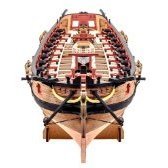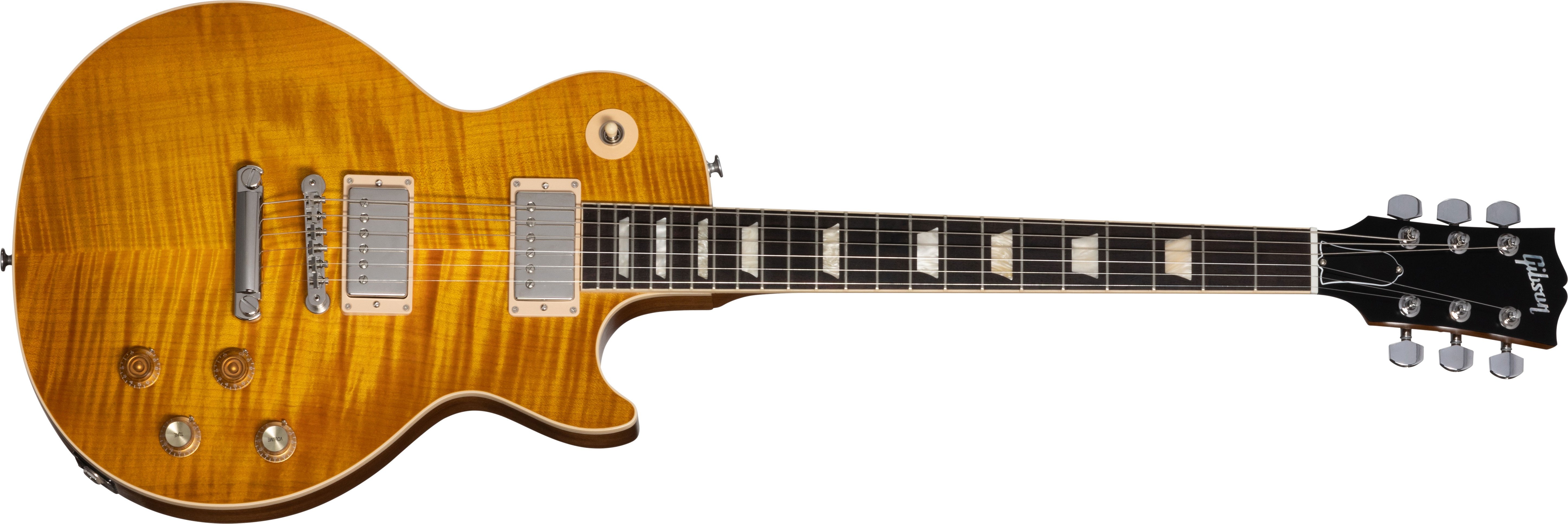-
Posts
6,063 -
Joined
-
Last visited
Content Type
Profiles
Forums
Gallery
Events
Everything posted by James H
-
A good degreaser is acetone or nail varnish remover. There should be no need to wash afterwards, but you can just rinse them in water.
- 382 replies
-
- Vanguard Models
- Duchess of Kingston
-
(and 1 more)
Tagged with:
-
If this was my model, I'd retire immediately afterwards. Just outstanding.
- 1,784 replies
-
- winchelsea
- Syren Ship Model Company
-
(and 1 more)
Tagged with:
-
I never tire of seeing this one come together. Looks like you've gripped this with both hands.
- 201 replies
-
- Duchess of Kingston
- Vanguard Models
-
(and 1 more)
Tagged with:
-
That really looks like it's coming along very well, and your adjustments have nailed it with the bulwark to deck fit.
- 382 replies
-
- Vanguard Models
- Duchess of Kingston
-
(and 1 more)
Tagged with:
-
STAGE 69: ADDING A HEEL DETAIL AND ASSEMBLING FOOT PARTS Every foot needs a heel, and this is now fitted, with a single screw locking things into position. Now it's the turn of the toes. Some of these parts are angled, but if you follow the manual, you'll see the toe parts have an indent on one side with a part number on them. I used these ass reference to make sure I got the toes correctly positioned. The grub screw also has a little thread lock to stop it coming part later. The toe tip and other toe part are fitted using a plastic bush insert and ridged pin to lock into position.
-
STAGE 68: FITTING THE ANKLE JOINT TO THE RIGHT LEG All three pistons are removed from their sprue and the two shorter ones fitted with the rubber end caps with a black, flanged screw. The knuckle joint is also assembled and pushed into the lower leg. I do have to say these pistons are way too sloppy. There's zero traction with the piston bodies and they wobble around like mad. I'll think of something to correct this...maybe a plasticard tube wrap for the shorter pistons. As the longer one has no rubber cap, that can't be changed, but it shouldn't matter with the other two being more sturdy The foot is now pushed into position.
-
STAGE 66: ADDING ANOTHER PART TO THE LOWER RIGHT LEG Onto another piston fits two end caps. These can only fit specifically to the correct ends, and they are simply a push fit. Another screw and bush fitting are used to fit to the lower leg assembly. Small details are fitted using a small drop or two of CA. A single screw and spring washer is fitted, connecting the lower right leg to the T-800. This can be posed in any position, but I left it neutral. I don't know how easy it will be to loosen that screw when complete.
-
STAGE 65: ADDING ANOTHER PART TO THE LOWER RIGHT LEG Another piston is fitted in the same way as the previous. The lower leg outer casing is now fitted. This also has a keyed system that stops it being incorrectly placed. The shin is now fitted. A few spots of CA are needed at the top and bottom, and once in position, a screw fastens it to the stationary piston.
-
STAGE 62: FITTING THE KNEE CAP AND KNEE JOINT Another ratchet disc is installed, and along with the knee cap that's assembled with CA, both assemblies now fit to the one in the previous stage. The knee is now fitted to the leg. A hex key is used to tighten the joint. This can later be loosened so the model can be specifically posed.
-
Pack 7 Pack 7 is finally done, and the T-800 is definitely growing in stature, even if he still doesn't have a leg to stand on. 😆 I am a little wary of now just picking it up via the chest cage, so grab by the pelvis now too. I don't want to put too much strain in one area. STAGE 61: BUILDING THE KNEE JOINT By now, you can see that any pivoting joint has these black ratchet discs than CA into the main part. No difference here. With the knee, a piston interior is also fitted into place.
-
I thought you'd gone quiet 😆
- 382 replies
-
- Vanguard Models
- Duchess of Kingston
-
(and 1 more)
Tagged with:
-
The memories are flooding back 👌 I do like the black uppers.
- 222 replies
-
- First Build
- Lady Isabella
-
(and 2 more)
Tagged with:
-

FINISHED - 1:8 GT500 Shelby Super Snake - Agora Models
James H replied to James H's topic in Non-ship/categorised builds
STAGE 90: REAR LIGHTS, LED WIRES, GAS CAP, GAS PIPE, CABLE HOLDERS Before I can start the wiring, the gas cap and gas cap base are fastened together using the small hinge and shortest small screws. This is then pushed into position and secured with a screw. The gas pipe holder is then also fastened into position, using screws from the outside rear. The right rear light is pushed into position... ...and the rear right LED strip popped into place. I did find that before I could fit the light holder, that I needed to clip down the LED tails on the soldered joints as they protruded a little too far and stopped the holder fitting snugly. With the holder in place, the cable is run in its channel and the cable clips used to hold it down. Again, a spot of CA was used to make sure these didn't eventually come loose when everything is finally assembled. Things really are getting close to finish now. Here's where Pack 11 leaves us. One more to go. I'm really hoping I see that pack before year end! -

FINISHED - 1:8 GT500 Shelby Super Snake - Agora Models
James H replied to James H's topic in Non-ship/categorised builds
STAGE 89: LOWER REAR BODY SECTION, TRUNK HINGES AND BRACKETS The lower rear body part is now offered up to the rear of the main body and secured with six screws. Both trunk hinges are fitted to the lid and the trunk led fitted to the main body, using the hinge brackets to hold in position. These are metal, so no chance of them being bent with any force. -

FINISHED - 1:8 GT500 Shelby Super Snake - Agora Models
James H replied to James H's topic in Non-ship/categorised builds
STAGE 88: TRUNK LID, LOCK AND SHELBY EMBLEM The trunk lock and Shelby emblem are now fitted to the trunk lid. -

FINISHED - 1:8 GT500 Shelby Super Snake - Agora Models
James H replied to James H's topic in Non-ship/categorised builds
STAGE 87: CENTER LIGHT BRACKET, HORNS, HOOD PINS, FOG LIGHT LENSES, LED SYSTEM, WIRE HOLDERS The centre light bracket and holds are fastened to the front bracket. The hood pins are now pushed into place and the hood closed to ensure they located through the holes in the forward hood. I found the hood would then snag them and pull them out again, so I used a little CA to fasten the pins. Now the headlights can be wired up, with wire 07 to the left, and 08 to the right. A cable tidy helps hold the wires in place when installed. Some white glue (PVA) is used to fit the fit lights. I didn't use CA here as it can fog clear plastic. The front is then offered up to the main body and screwed into position, making sure the headlight cables fit neatly through the holes in the front bracket. The cables are then run through the. body channels and held into position with wire clips. I wasn't very confident that those clips wouldn't later come loose so I used a tiny spot of CA to hold them in place. The hood pin plates are now pushed into position and the lanyards/Lynch pins attached.
About us
Modelshipworld - Advancing Ship Modeling through Research
SSL Secured
Your security is important for us so this Website is SSL-Secured
NRG Mailing Address
Nautical Research Guild
237 South Lincoln Street
Westmont IL, 60559-1917
Model Ship World ® and the MSW logo are Registered Trademarks, and belong to the Nautical Research Guild (United States Patent and Trademark Office: No. 6,929,264 & No. 6,929,274, registered Dec. 20, 2022)
Helpful Links
About the NRG
If you enjoy building ship models that are historically accurate as well as beautiful, then The Nautical Research Guild (NRG) is just right for you.
The Guild is a non-profit educational organization whose mission is to “Advance Ship Modeling Through Research”. We provide support to our members in their efforts to raise the quality of their model ships.
The Nautical Research Guild has published our world-renowned quarterly magazine, The Nautical Research Journal, since 1955. The pages of the Journal are full of articles by accomplished ship modelers who show you how they create those exquisite details on their models, and by maritime historians who show you the correct details to build. The Journal is available in both print and digital editions. Go to the NRG web site (www.thenrg.org) to download a complimentary digital copy of the Journal. The NRG also publishes plan sets, books and compilations of back issues of the Journal and the former Ships in Scale and Model Ship Builder magazines.




